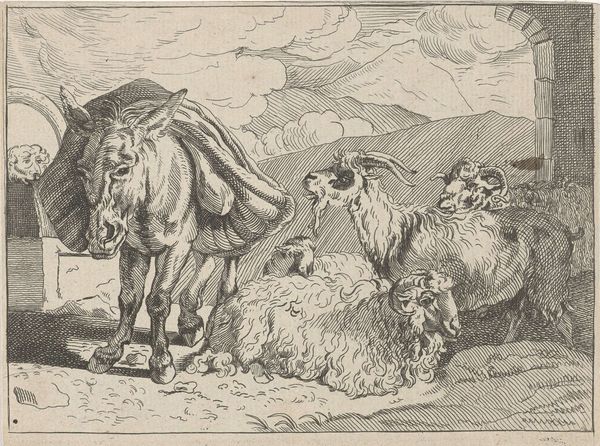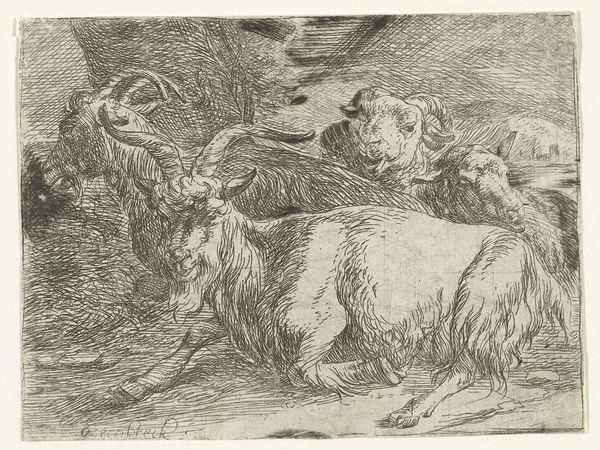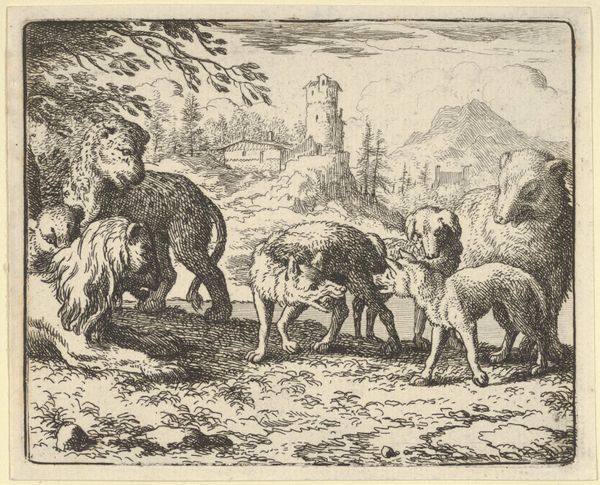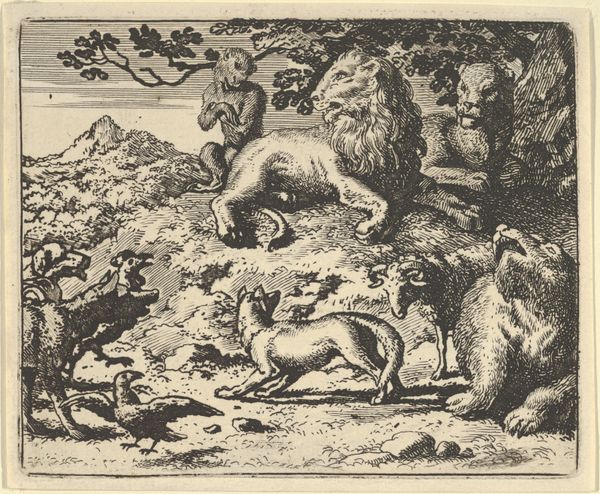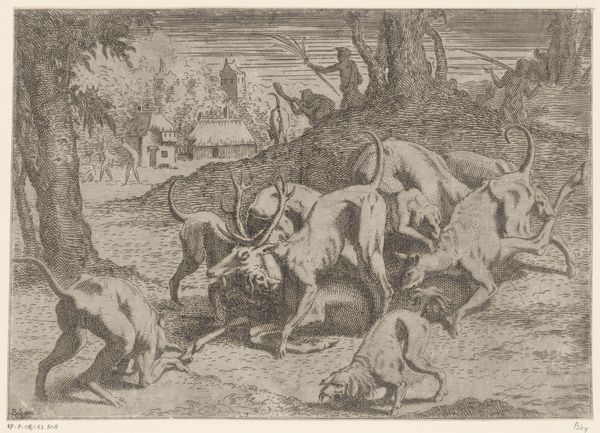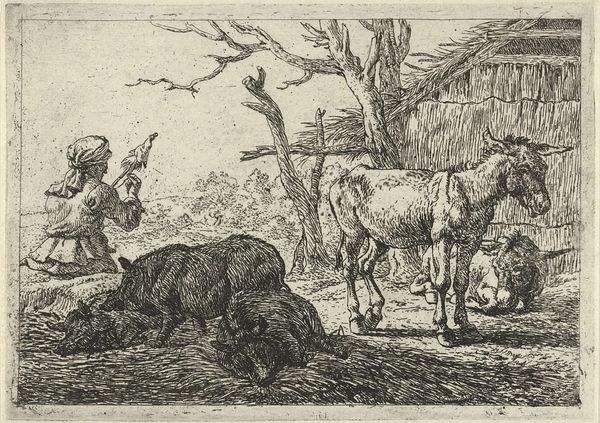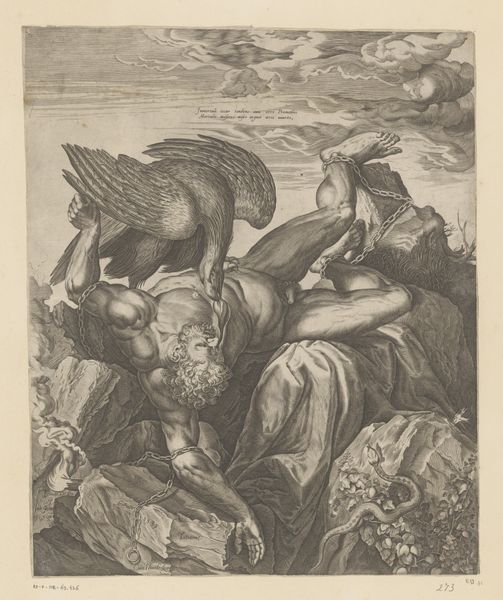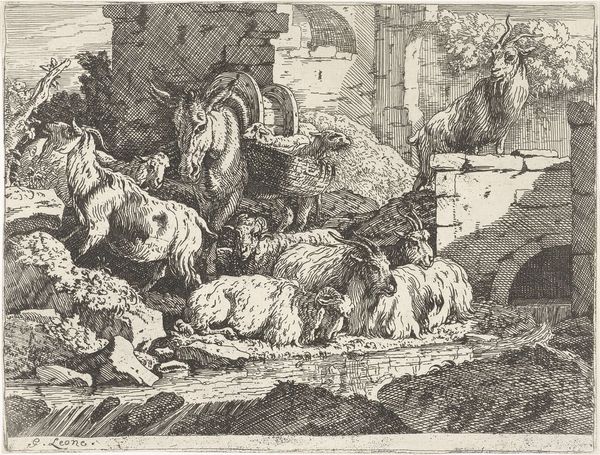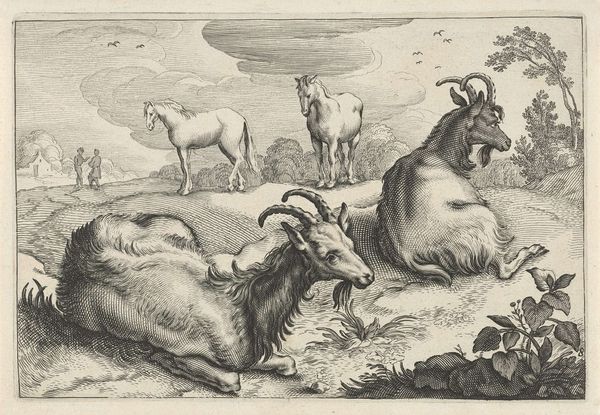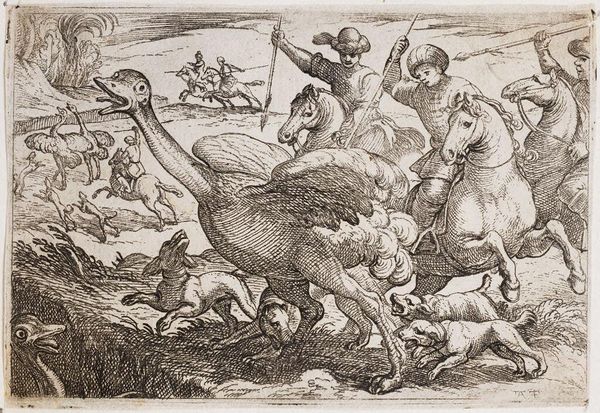
drawing, print, etching, engraving
#
drawing
#
baroque
#
mechanical pen drawing
# print
#
pen illustration
#
pen sketch
#
etching
#
pencil sketch
#
landscape
#
figuration
#
personal sketchbook
#
sketchwork
#
pen-ink sketch
#
line
#
pen work
#
sketchbook drawing
#
genre-painting
#
sketchbook art
#
engraving
Dimensions: height 167 mm, width 220 mm
Copyright: Rijks Museum: Open Domain
Govert van der Leeuw made this print, depicting livestock near ruins, using etching techniques. The etching process, employed here, involves coating a metal plate with a waxy, acid-resistant substance, and then drawing through it with a sharp needle. The plate is then immersed in acid, which bites into the exposed lines, creating an image that can be printed. What is captivating here is not just the subject matter—the animals and classical ruins—but the labor that went into producing the image. Every line is a result of skilled and precise labor. The print also reflects a culture of consumption. In the 17th century, printed images were widely disseminated. The images themselves became a commodity, circulating widely and catering to a growing public interest in art, nature, and classical antiquity. This print, like many others, represents a confluence of artistic skill, market demand, and cultural fascination. Van der Leeuw's work blurs the boundary between art and craft, inviting us to consider the artistry embedded in reproductive techniques.
Comments
No comments
Be the first to comment and join the conversation on the ultimate creative platform.


